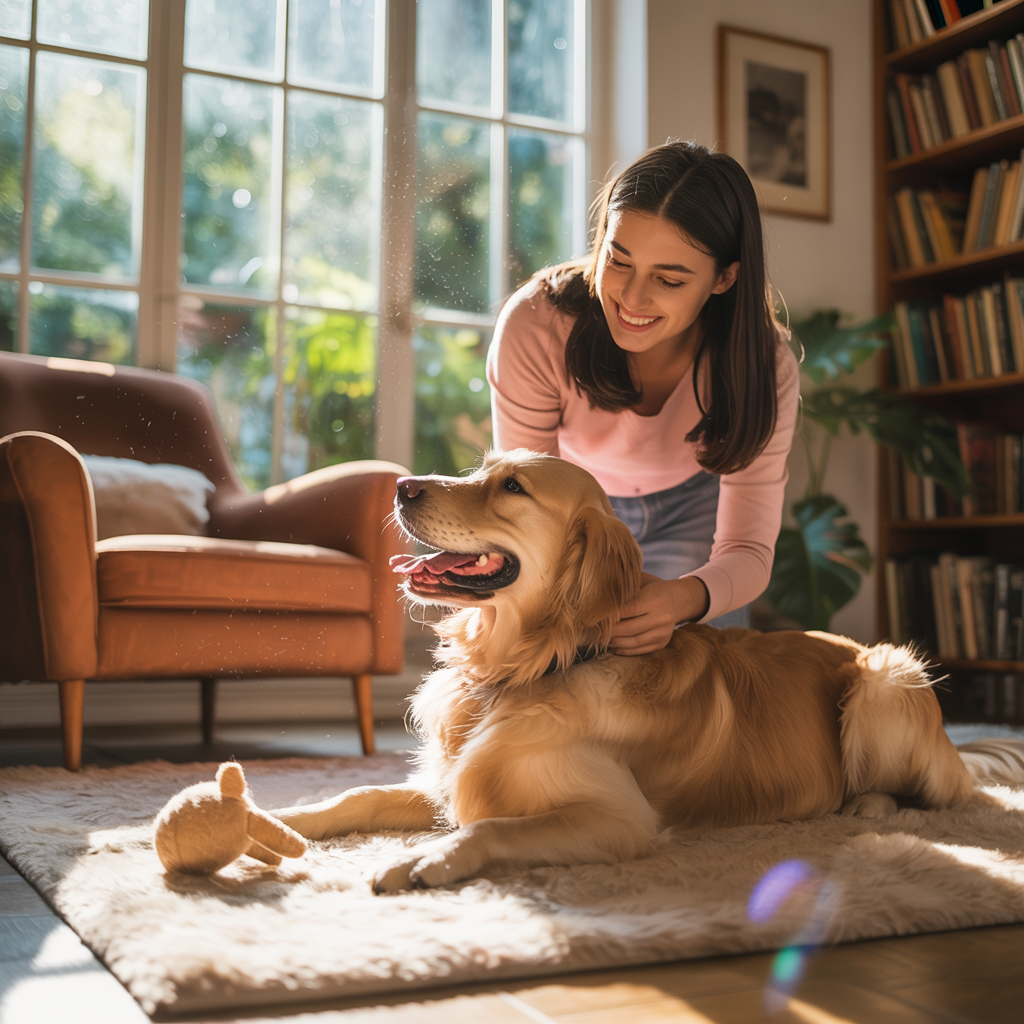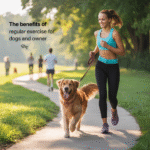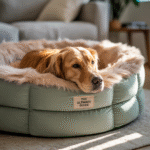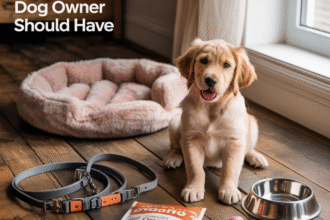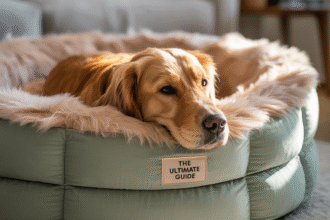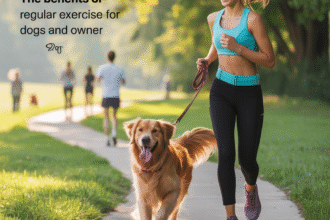The Joy of Owning a Dog: Enhancing the Bond with Your Furry FriendThere’s something magical about the moment a dog enters your life. Whether it’s the excited tail wagging that greets you at the door, the warm weight of a furry head resting on your lap, or the simple companionship during a quiet evening walk, dogs have an extraordinary ability to transform our daily existence into something richer and more meaningful.
The bond between humans and dogs stretches back thousands of years, yet it feels as fresh and vital today as it must have felt to our ancestors. This relationship isn’t just about having a pet; it’s about welcoming a family member who speaks a different language but somehow understands us perfectly. Every dog owner knows that peculiar feeling of being truly seen and accepted, flaws and all, by their four-legged companion.
The Science Behind the Bond
The connection we feel with our dogs isn’t just emotional sentimentality—it’s deeply rooted in biology. When you gaze into your dog’s eyes, both of you experience a surge of oxytocin, the same hormone that bonds mothers to their babies. This chemical reaction creates a feedback loop of affection that strengthens with every interaction. Research has shown that dogs have evolved specific facial muscles that allow them to make expressions that trigger nurturing responses in humans, particularly that irresistible “puppy dog eyes” look that melts even the sternest hearts.
Beyond the chemistry, dogs have developed an remarkable ability to read human emotions and body language. They can detect subtle changes in our scent that indicate stress, illness, or mood changes. Some dogs can even alert their owners to impending seizures or dangerous blood sugar levels. This intuitive understanding creates a sense of being truly known and cared for that transcends typical pet ownership.
Building Trust Through Consistency
Trust forms the foundation of any strong relationship with your dog, and it’s built through countless small moments of reliability and care. Dogs thrive on routine and predictability, finding comfort in knowing when meals will arrive, walks will happen, and bedtime approaches. This consistency doesn’t mean rigid scheduling but rather creating a framework of dependability that helps your dog feel secure in their world.
The way you handle daily interactions matters immensely. Speaking in calm, consistent tones, using the same commands, and maintaining predictable responses to behaviors all contribute to a sense of safety. When your dog knows what to expect from you, they can relax into the relationship, allowing their personality to flourish. This is particularly important for rescue dogs who may have experienced trauma or inconsistency in their past. Patience and steady kindness can work wonders in helping these dogs learn to trust again.
Physical touch plays a crucial role in building trust. Regular grooming sessions, gentle petting, and even simple proximity create opportunities for bonding. Many dogs lean against their owners or rest a paw on them—these small gestures are their way of maintaining connection and showing trust. Respecting your dog’s boundaries while consistently offering affection helps establish a relationship based on mutual respect and understanding.
Communication: Learning Each Other’s Language
Living with a dog means becoming fluent in a language without words. Dogs communicate through body posture, ear position, tail movement, vocalizations, and countless subtle signals that become second nature to attentive owners. The angle of a tail wag can indicate different emotions—a high, stiff wag might signal alertness or potential aggression, while a low, sweeping wag often indicates friendly submission or happiness.
Learning to read your dog’s signals allows you to respond appropriately to their needs and emotions. A yawn might indicate stress rather than tiredness, lip licking could signal anxiety, and a play bow is an unmistakable invitation to fun. As you become more attuned to these signals, you’ll find yourself anticipating your dog’s needs and responding before they even have to ask.
Equally important is teaching your dog to understand your communication. Consistent verbal commands paired with hand signals create a robust communication system. But beyond formal training, dogs learn to read our routines and habits. They know the sound of car keys means a possible adventure, the rustle of a leash promises a walk, and the tone of voice that means playtime versus settling down. This mutual understanding creates a partnership where both parties feel heard and respected.
Shared Adventures and Creating Memories
The joy of dog ownership multiplies exponentially when you actively create experiences together. Every walk becomes an opportunity for discovery as you see the world through your dog’s perspective—noticing scents, sounds, and sights you might otherwise overlook. That ordinary neighborhood route transforms into an adventure filled with important messages left by other dogs, interesting creatures to observe, and familiar friends to greet.
Weekend hiking trips, beach visits, or camping adventures take on new dimensions with a canine companion. Watching your dog experience the ocean for the first time, navigate a challenging trail, or simply roll in grass with pure abandon reminds us to find joy in simple pleasures. These shared experiences create a tapestry of memories that strengthen your bond over time.
Even mundane activities become special when shared with your dog. Running errands might include a stop at a pet-friendly store where your dog can pick out a new toy. Coffee shop visits to dog-friendly patios become social occasions. Working from home gains a comfortable rhythm with your dog napping nearby, occasionally wandering over for a pat or to remind you it’s time for a break.
The Daily Rhythms of Life Together
The true joy of dog ownership often lies in the quiet, everyday moments that create the rhythm of life together. Morning routines take on a special quality when they begin with an enthusiastic greeting from someone who acts like they haven’t seen you in years, even though you just woke up. The simple act of preparing your dog’s breakfast while they wait with barely contained excitement adds purpose and joy to the start of each day.
Evening routines become cherished rituals. Perhaps it’s the after-dinner walk when the world quiets down, or the way your dog circles exactly three times before settling into their bed, or how they gradually migrate closer to you on the couch as the night progresses. These predictable patterns create a sense of home and belonging that extends beyond physical space.
Dogs have an uncanny ability to sense when we need comfort. On difficult days, they seem to know to be extra gentle, offering a head on our knee or simply sitting quietly nearby. During celebrations, they join in with enthusiastic tail wagging and prancing, even if they don’t understand the reason for joy. This emotional attunement makes them irreplaceable companions through life’s ups and downs.
Training as a Form of Love
Training your dog isn’t about dominance or control—it’s one of the purest expressions of love and care you can offer. Teaching your dog commands and behaviors keeps them safe, helps them navigate the human world successfully, and provides mental stimulation that’s crucial for their wellbeing. Every training session is an opportunity to strengthen your bond through clear communication, positive reinforcement, and shared achievement.
Positive reinforcement training methods build confidence and trust. When your dog successfully learns a new command or behavior, the pride and excitement you both feel creates a positive feedback loop. The treats, praise, and play rewards aren’t just payment for compliance—they’re celebrations of teamwork and understanding. This approach to training transforms potential frustration into fun challenges you tackle together.
Beyond basic obedience, training can expand into tricks, agility, scent work, or other activities that engage your dog’s natural abilities and interests. Teaching your dog to find hidden treats, navigate an obstacle course, or perform silly tricks provides mental stimulation while deepening your connection. The time invested in training pays dividends in a well-adjusted, confident dog who trusts your guidance.
Health and Wellbeing: Caring for Each Other
The responsibility of caring for your dog’s health is a privilege that deepens your bond. Regular vet visits, proper nutrition, exercise, and preventive care show your commitment to their wellbeing. In return, dogs often motivate us to take better care of ourselves. Those daily walks benefit both ends of the leash, providing exercise, fresh air, and stress relief.
Being attuned to changes in your dog’s behavior or health creates an intimate knowledge of their normal patterns. You become an expert in your particular dog—knowing their favorite sleeping positions, their preferred toys, how they act when they’re not feeling well, and what makes them especially happy. This deep familiarity allows you to advocate for their health and catch potential problems early.
As dogs age, the caregiving relationship often intensifies. Adapting to their changing needs—perhaps shorter walks, softer food, or more frequent vet visits—is an act of love that honors the years of companionship they’ve provided. Many owners find that caring for a senior dog, while sometimes challenging, brings a special tenderness to the relationship that makes every remaining day precious.
The Social Dimension
Dogs are natural conversation starters and community builders. Walking your dog opens doors to interactions with neighbors you might never otherwise meet. Dog parks become social hubs where humans bond over their shared experience of dog ownership while their pets play. These casual interactions often blossom into friendships, creating a support network of fellow dog lovers who understand the joys and challenges of canine companionship.
Your dog’s social needs also encourage you to maintain regular outdoor activity and social engagement. Even on days when you might prefer to stay isolated, your dog’s needs get you moving and potentially interacting with others. This gentle push toward engagement can be especially valuable during difficult times when the temptation to withdraw is strong.
Many dogs seem to have an innate understanding of who needs their attention most. They gravitate toward children who need a gentle friend, elderly people who could use some cheer, or anyone who seems to need a moment of uncomplicated affection. Watching your dog spread joy to others adds another dimension to the pleasure of ownership—you become a facilitator of happiness, simply by sharing your furry friend with the world.
Embracing the Full Journey
The joy of owning a dog encompasses the full spectrum of experiences, not just the easy moments. The middle-of-the-night bathroom emergencies, the destroyed shoes, the worry during illness, and the muddy paw prints are all part of the package. These challenges, rather than diminishing the joy, often enhance it by adding depth and authenticity to the relationship.
Learning to laugh at the chaos, finding patience during the frustrating moments, and choosing love even when it’s difficult—these are the experiences that transform dog ownership from a simple pet-keeping arrangement into a profound relationship. Every challenge overcome together strengthens the bond and adds to your shared story.
The finite nature of a dog’s life adds poignancy to the joy of ownership. Knowing that our time together is limited makes every day more precious. This awareness encourages us to be present, to not postpone that extra walk or play session, and to fully appreciate the gift of their companionship while we have it. The depth of grief we feel when we lose them is a testament to the joy they brought to our lives.
Conclusion
The joy of owning a dog cannot be fully captured in words because it lives in the accumulation of moments—the specific way your dog’s ears perk up when they hear your car, the weight of their head on your foot while you work, the pure excitement of their greeting, and the quiet companionship of evening walks. It’s a joy built on mutual trust, daily care, shared adventures, and unconditional acceptance.
Enhancing the bond with your furry friend isn’t about grand gestures or expensive toys. It’s about showing up consistently, learning their language while teaching them yours, and creating a life together filled with routine comforts and special adventures. It’s about recognizing that in caring for them, you’re blessed with a companion who will teach you about loyalty, living in the moment, and finding joy in simple pleasures.
Every dog owner’s journey is unique, shaped by the personality of their particular dog and the life they build together. Yet there’s a universal truth in the joy these relationships bring—a reminder that love doesn’t require words, that happiness can be found in daily walks, and that coming home to someone who’s genuinely thrilled to see you is one of life’s greatest gifts. In opening our homes and hearts to dogs, we don’t just gain pets; we gain teachers, companions, and family members who leave paw prints on our hearts that last a lifetime.
